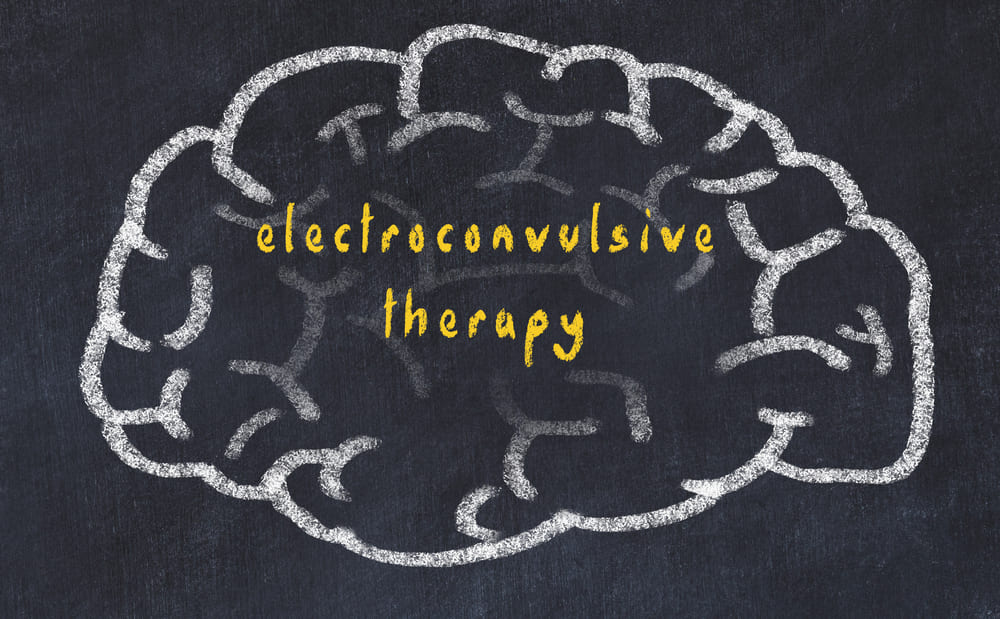- Jay Schiff
- 0 Comments
ECT vs. TMS: Which Is Better?
One of the most rampant mental illnesses across the globe today is depression. It manifests differently for different people; hence treatments will work differently for patients. Some only need talk therapy and anti-depressants to manage it, while some must deal with treatment-resistant depression.
Two widely discussed and incredibly efficient treatments for depression are TMS and ECT. Read on for more about them.
What is ECT?
ECT, also called electroshock therapy, is a brain stimulation therapy that deliberately induces a mild seizure with controlled electric currents in the brain to reset the brain forcibly. The electric currents are passed through electrodes positioned on a patient’s head to induce seizures.
What is TMS?
TMS is a brain stimulation process that employs targeted magnetic forces to a specific brain region that became less active due to treatment-resistant depression or other chronic mental illnesses, such as OCD (obsessive-compulsive disorder).
With the aid of a computer program, the specialist can focus on very particular brain areas associated with mood regulation.
What are these types of treatments used for?
Both ECT and TMS are treatments used to treat treatment-resistant depression and other severe mental illnesses that have failed to respond to conventional therapy and treatment options. However, since they are entirely different treatment options, there are several different things to take into account when contrasting them, such as:
- Success rates
- Treatment specifics
- Side effects
- Patient medical history
- Cost
When and why should one choose between ECT and TMS?
You may have to choose between ECT and TMS if you have treatment-resistant depression. TMS is effective for treating treatment-resistant patients and those just beginning to struggle with a mental health disorder. Patients already receiving another type of treatment, like medication or psychotherapy, may find it a helpful alternative.
TMS is also a good option for people who cannot handle the side effects of other treatments like ECT. You may also have to choose between ECT and TMS based on the patient’s age. Traditional TMS can be used on children and adults, whereas Deep TMS is intended for people 18 years or older.
If you have psychotic symptoms associated with the psychotic depression subtype, you may have to choose whether to go for ECT or TMS therapy. Since ECT is a quick-acting treatment, people with acute bipolar disorder who also have psychotic symptoms and schizophrenia may benefit from it.
People who have undergone previous less invasive treatments without success may also have to choose between the two. In such cases, ECT is considered the last resort.
What is the difference between TMS and ECT?
TMS vs ECT Effectiveness
Both therapies have been demonstrated to be highly effective in treating treatment-resistant depression. However, it does not mean the two are similar in terms of effectiveness. There is proof that ECT has superior results of the two treatments.
This translates to greater overall efficacy, lasting mood improvements, and possibly even more significant mental health improvements.

ECT Vs TMS Treatment Specifics And Invasiveness
In ECT, electrical currents seize the brain, functioning like a reset button. Due to the need for a general anesthetic, ECT must be performed in an operating room. TMS is a much less complicated process that stimulates the brain’s nerve cells with moderate magnetic pulses, promoting healing and growth. Since it does not require anesthesia or special medical equipment, TMS can be performed in the practitioner’s office.
Risks And Side Effects
TMS is a safe procedure with almost no chance of adverse side effects. Although some patients may experience a tingling sensation or very mild headache at the stimulation site, close to the electromagnet coil, these side effects are usually very brief. After the procedure, one can embark on normal activities and drive immediately.
Even though ECT is considered relatively safe, it does have several side effects, including muscle aches, headaches, confusion, and nausea. Due to the use of anesthesia, the procedure also carries a low risk of cardiac or respiratory arrest.
Some patients also develop long-term memory or short-term loss. Whereas long-term memory loss is much more likely to be permanent, short-term memory loss usually goes away over time.
Treatment Duration And Frequency
ECT is typically administered twice weekly for a commitment of about 10 to 12 sessions. This indicates that the total length of the treatment may be up to six weeks.
Most TMS therapy people typically follow a 6-week treatment schedule of 20 to 30 sessions. Therefore, you may attend up to five weekly sessions for six weeks.
TMS Vs. ECT Cost
TMS procedures are less expensive than ECT. ECT involves more preparation on the part of the physician and patient and the administration of general anesthesia and other drugs. Patients must also recuperate in the hospital, which raises the total cost.
The Pros And Cons Of TMS In Comparison To ECT
|
ECT |
TMS |
|
|
Invasiveness |
More invasive. |
Less invasive, can be used in conjunction with medication. |
|
Safety |
More risky. |
Less risky, has no significant, lingering, or systemic adverse effects. |
|
Cost |
More expensive. |
Less expensive. |
|
Length of treatment |
Requires less sessions to get the desired results. |
Requires more sessions. |
|
Recovery |
Requires anesthesia, lengthening and complicating the recovery process for days. |
The recovery is immediate, patients can resume normal activities immediately. |
|
Side effects |
Cognitive issues and short-term or long-term memory loss. There are chances of severe side effects that can result in death and pulmonary and cardiovascular complications in a very small percentage of cases. |
No cognitive or severe side effects. |

Conclusion
Is TMS better than ECT? Both can treat treatment-resistant depression and other mental illnesses that are resistant to other treatments but based on your circumstances, one may be preferable. If you’re uncomfortable going under, have existing cardiac conditions or want quick outpatient therapy, ECT may not be the best option. If your insurance does not cover any of the two procedures, you might want to consider the cost of each before settling for one.
